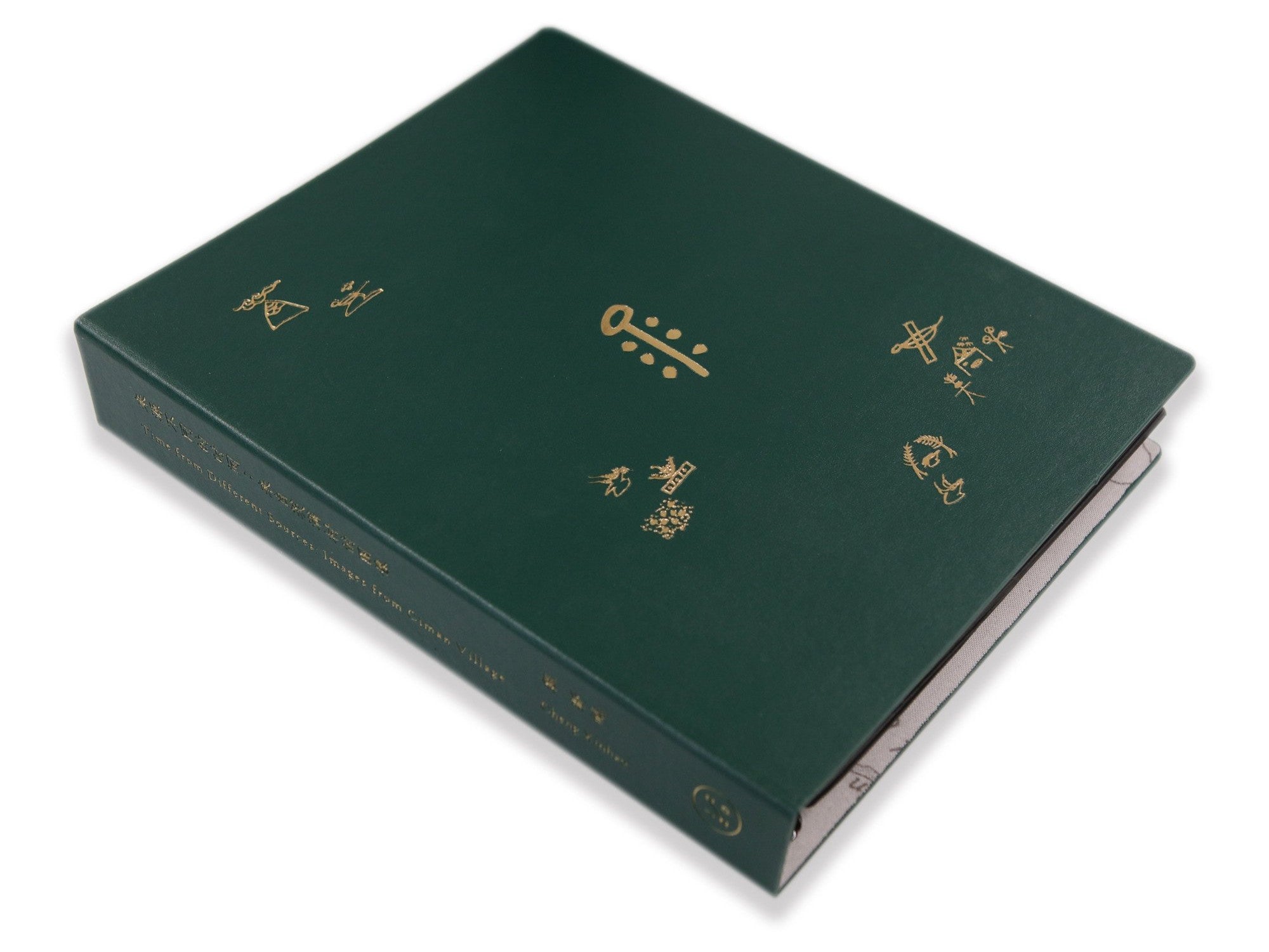






















サイズ: 305 x 255 x 40mm
174頁、革張りファイリング式ハードカバー
初版800部、 サイン&ナンバリング
20172017年6月発行
中国雲南省の玉龍雪山から流れる川に、青竜川と呼ばれる川がある。青竜川は、茨满村(シーマン村)という村を流れている。茨满村は、この近辺では一番大きい麗江より古くからある村だ。麗江は北からの移民たちによってつくられた都市で、移民たちは自分たちのことをナシ族と呼んでいる。ナシ族は麗江を築きに行き、やがてそこに住むようになった。麗江は、漢の領地からチベットへの玄関口となった。そして茨满村は、商人たちが麗江に入るときの最初の通過点となった。馬やキャラバンが、そこで一休みをする。それによって、村の商いは栄えた。時が経つにつれ、村を通過する新しい道が作られていき、馬は車に取って代わった。そして、茨满村は静けさを取り戻した。毎年、青竜川の水は増減する。時に川は決壊し、地域に水害をもたらす。毎年、毎年、田畑の穀物は然るべきタイミングで芽を出し、よく育ち、熟し、やがて朽ちる。ナシ族は何代にもわたり農業を営んでいる。毎年4月には、村はペアブロッサムの花でいっぱいになる。
今でも茨满村は、麗江へ向かう際の最初の通過点である。ハイウェイにつながる黄山大橋は、村の頭の上をさっと通る。麗江は発展し、一方茨满村は小さくなっている。田畑がわずかに青竜川岸沿いに見える。茨满村の村民はもう田畑では働いていない。彼らは、頭上に鳴り響く絶え間ない車の騒音を受け入れたようだ。こうして時は過ぎる。ナシ族の人々は古くからの歌を口ずさみ、やがて老いる。若者はだんだんとここを去る。青竜川の東岸の、都市がまだ浸食していない空っぽの土地に新しい村ができ始めている。ほかの地方から来た人たちが、そこに店を開き、レンガを焼き、車を直し、豚を育て、廃材のリサイクルをしている。もし、都市の開発の手が伸びなかったら、この新しい移民たちが永住し、新しい地元民となるかもしれない。穏やかな村は、急激に変化しているようだ。時の流れとさまざまな要因が日々の生活の中で同時に動き出し、拮抗し、ついに調和した。もしくは、彼らは共存する方法を模索しているとも言える。
この作品は、都市化に付随する事柄を表している。作品の4つの要素は、地質学的な時間、村の今、村の歴史的な時間、そして今ここに存在する肉体の緊張感をそれぞれに物語る。同時に存在する今現在の状況を、多音的で物語のようなアプローチを使って再構築を試みる。単純な物語ではなく複雑な現実は、この方法によってその複雑や柔軟性を完全に表現することができるだろう。この過程で、架空の肖像の視点と複雑に絡み合う糸が描かれる。人目につかない細かなことから浮かび上がり、物語が進むように互いに絡み合う。そして、広がったり縮んだり、すべてのイメージがともにつながるまでお互いに接触する。このようにして、ページが折られて広げることのできる本作は包括的な物語の中で形成され、渦や奥底にある想いは線上の時系列に浮かび上がる。やがてこれらのイメージは、その平穏な見かけの下に隠された会話を明らかにする現実の分析を形作る。
程新皓/Cheng Xinhao(チェン・シンハオ)は1985年中国雲南省生まれ。2013年北京大学にて化学・分子工学の博士号取得。2015年三影堂写真賞のファイナリストに選出され、また資生堂写真賞を受賞。現在、雲南省昆明市を拠点として活動。
----------------------------
photography by Cheng Xinhao/程新皓
Published by Jiazazhi Press
Size: 305mm x 255mm x 40mm
174 pages, Leather Hardcover
First Edition: 800, Published in June 2017
About the Author
Cheng Xinhao, born in Yunnan Province in 1985, got his Ph.D. from the College of Chemistry and Molecular Engineering in PKU in 2013. As one of the finalists of 2015 Three Shadow Photography Award he won the Shiseido Photographer Prize. Now he lives and works as an artist in Kunming Yunnan.
About the Book
From the Jade Dragon Mountain, there flows a river called "the Green Dragon River". The Green Dragon River flows through a village called "Ciman". Ciman Village has been existed before the largest city, Lijiang in this area. Lijiang was built by a group migrant from the north, and the migrants called themselves the Naxi. The Naxi went on to build the city of Lijiang, and thus became locals. Lijiang became the gateway of Tibet from the Han lands, and at that time, Ciman Village was the first stop as the trading caravans entered Lijiang city. The horses and caravans stopped at the village to rest. The business of the village flourished. As time goes, new roads were built bypassing the village; horses were replaced by cars, and thus Ciman regained its peace. Every year, the waters of the Qinglong (Green Dragon) River rise and fall. Sometimes the river breaks its banks and floods the surrounding fields. The crops in the fields sprout, thrive, ripen and decay at their appointed times, year in and year out. The Naxi have lived on farming for generations. Each year in April, the village is filled with pear blossoms.
